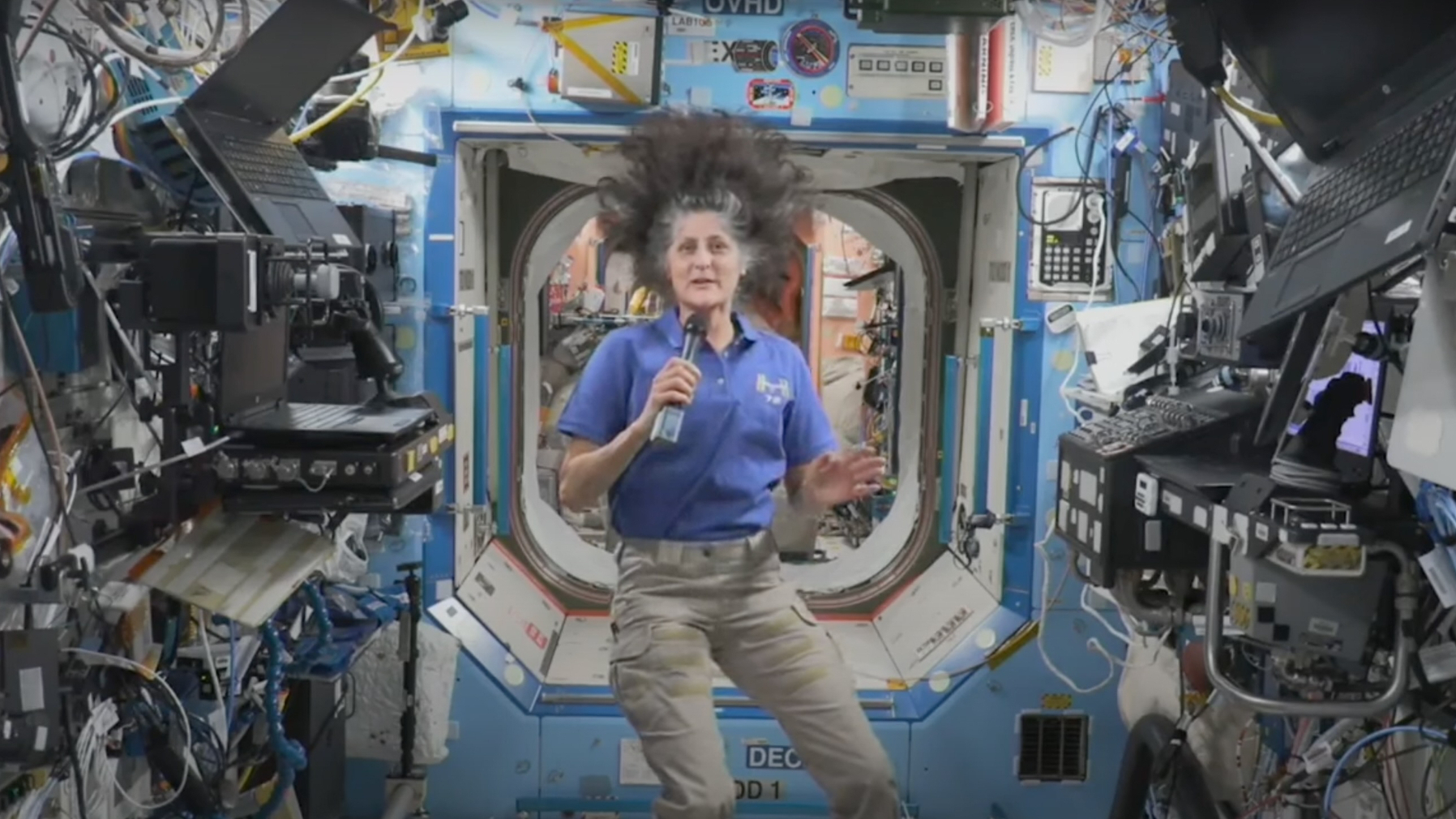'I weigh the same': NASA astronaut Suni Williams refutes tabloid health claims (video)
Don't believe the tabloids: NASA astronaut Suni Williams says she's doing just fine aboard the International Space Station (ISS).
Last week, media outlets such as The Daily Mail and The New York Post published stories speculating that Williams' health may be deteriorating in Earth orbit, citing an outside doctor's opinion that she looks "gaunt" in some recent photos.
NASA officials quickly refuted those claims, saying Williams and the other three agency astronauts currently living on the ISS are in good health. And now, Williams herself has delivered the same message.
"I'm the same weight that I was when I got up here," Williams said today (Nov. 12) in a video interview from the ISS, in response to a question from the New England Sports Network.
Related: Astronaut Suni Williams 'in good health' on the ISS, NASA says, refuting tabloid claims
Williams said she's been working out assiduously on the orbiting lab, as all astronauts do to stave off the muscle wasting and loss in bone density that can come with long-duration exposure to microgravity.
She's been riding an exercise bike, running on a treadmill and lifting weights on the ISS, and her body has changed as a result.
Breaking space news, the latest updates on rocket launches, skywatching events and more!
"I could definitely tell that weightlifting, which is not something that I do all the time, has definitely changed me. My thighs are a little bit bigger, my butt is a little bit bigger," Williams said.
But, she stressed, "I weigh the same."
Williams arrived at the ISS on June 6 with fellow NASA astronaut Butch Wilmore, on the first-ever crewed mission of Boeing's Starliner capsule.
That mission, known as Crew Flight Test (CFT), was supposed to last just 10 days or so. However, Starliner experienced thruster issues on its way to the orbiting lab. NASA extended CFT to study the problem in detail and ultimately decided to bring Starliner home without anyone on board, which happened on Sept. 6.
Williams and Wilmore will come back to Earth in February 2025 with the two astronauts of SpaceX's Crew-9 mission, who arrived in late September.
Williams commands the orbiting lab's Expedition 72. The other members of the mission currently living on the ISS are Wilmore, fellow NASA astronauts Don Pettit and Nick Hague, and Russian cosmonauts Aleksandr Gorbunov, Aleksey Ovchinin and Ivan Vagner.

Michael Wall is a Senior Space Writer with Space.com and joined the team in 2010. He primarily covers exoplanets, spaceflight and military space, but has been known to dabble in the space art beat. His book about the search for alien life, "Out There," was published on Nov. 13, 2018. Before becoming a science writer, Michael worked as a herpetologist and wildlife biologist. He has a Ph.D. in evolutionary biology from the University of Sydney, Australia, a bachelor's degree from the University of Arizona, and a graduate certificate in science writing from the University of California, Santa Cruz. To find out what his latest project is, you can follow Michael on Twitter.

